How I Saved $15,000 on my Amazon FBA Book Reselling Business

How I Saved $15,000 on my Amazon FBA Book Reselling Business?
Did you know that book sellers end up removing at least 5 to 10% of their FBA inventory at a loss? Why did they send those “non-selling” inventory to Amazon FBA in the first place? Couldn’t they know which ones to send in which ones to avoid based on the sales rank? Unfortunately, there can be various reasons for not getting the sale. Having a very low sales rank does not mean that the item will sell for sure. So how do we manage our FBA inventory in a better way? Let’s dive in…
Hello, fellow resellers! I’m Omer aka bookupcycle, I have been reselling books on Amazon for almost a decade, and today I’m sharing an intriguing insight into the world of Amazon’s Fulfillment by Amazon (FBA) program, particularly focusing on how I saved a whopping $15,000 through strategic removal orders. This topic, often sidelined, is crucial for anyone looking to maximize their FBA efficiency and minimize unnecessary costs.
Understanding FBA and Its Complexities
FBA offers a robust platform for selling products (nearly 40% of the U.S. ecommerce market in 2023), especially books. The process starts when you send your inventory to Amazon in bulk. Upon receipt, Amazon takes over the storage, making your items ready for sale. They utilize their extensive network of warehouses, employees, and advanced robotics to ensure your products are picked, packed, and shipped promptly upon purchase.
However, this streamlined system comes with its complexities. Most notably, sellers face diminished control over their inventory, as it’s stored in Amazon’s warehouses, not their own. Furthermore, Amazon FBA’s extensive fee structure, fulfillment fee, monthly storage fee, long-term storage fee, creating removal order fees add to the operational challenges.
Types of Removal Orders
There have been only two ways to create removal orders, return-to-address and disposal. Either Amazon ships that item to your address or disposes of it so that nobody sees that inventory ever again. However, Amazon introduced the third type of removal order a few years ago, liquidation type.
In the Amazon FBA liquidation program, Amazon finds you a buyer through its network so that you can recover some value of your inventory. For about 5% to 10% of average selling price (ASP), wholesale liquidators will purchase this inventory from you thanks to Amazon.
In contrast to the standard fees, which start at $0.97 per item for return to address and disposal orders, liquidation fees can be as low as $0.25. This pivotal change of liquidation form made sellers lose less money on their excess inventory.
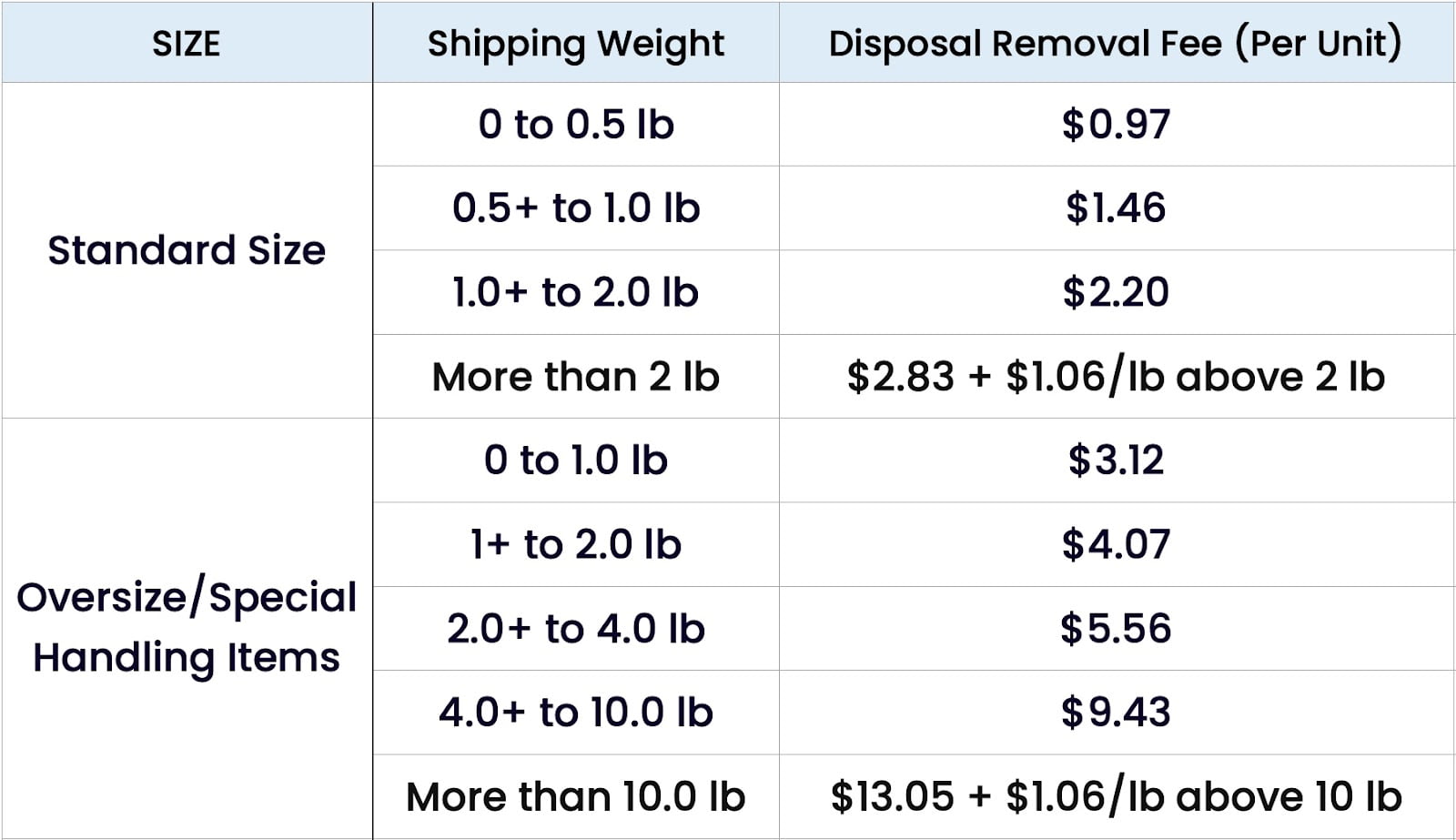
FBA Removal Order Fees for Return-to-Address and Disposal Types

FBA Removal Order Fees for Liquidation Type
Liquidation Orders in Practice
Imagine this scenario: You have a small, lightweight book that isn’t selling. You opt for a liquidation removal order, and Amazon finds a buyer willing to pay $1. After Amazon’s charges ($0.25 plus 15% of the recovery value), you end up with $0.60, far more favorable than the $0.97 cents you’d spend on a disposal order.
A Deep Dive into Cost Savings on Removal Orders
Upon reviewing my account’s history, a stark contrast in removal order costs became evident. The average cost for liquidation orders stood at a mere $0.05 (where Amazon paid $0.36 and charged $0.41), in comparison to the $2.08 average for standard removal orders(return-to-address or disposal). This represents a significant saving, especially when you consider I send in thousands of books every single day.
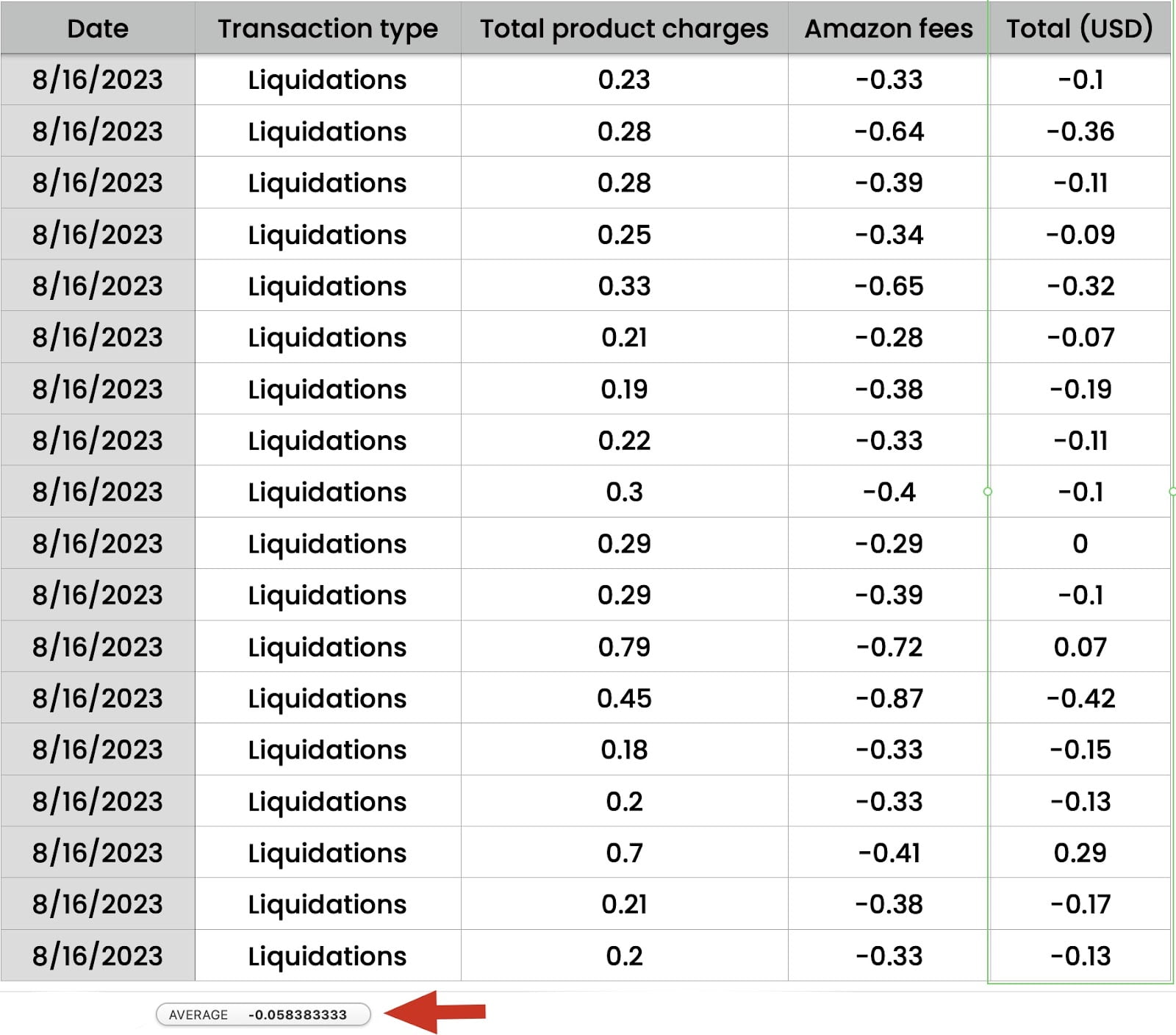
Average Removal Order Fee for Liquidation, $0.05
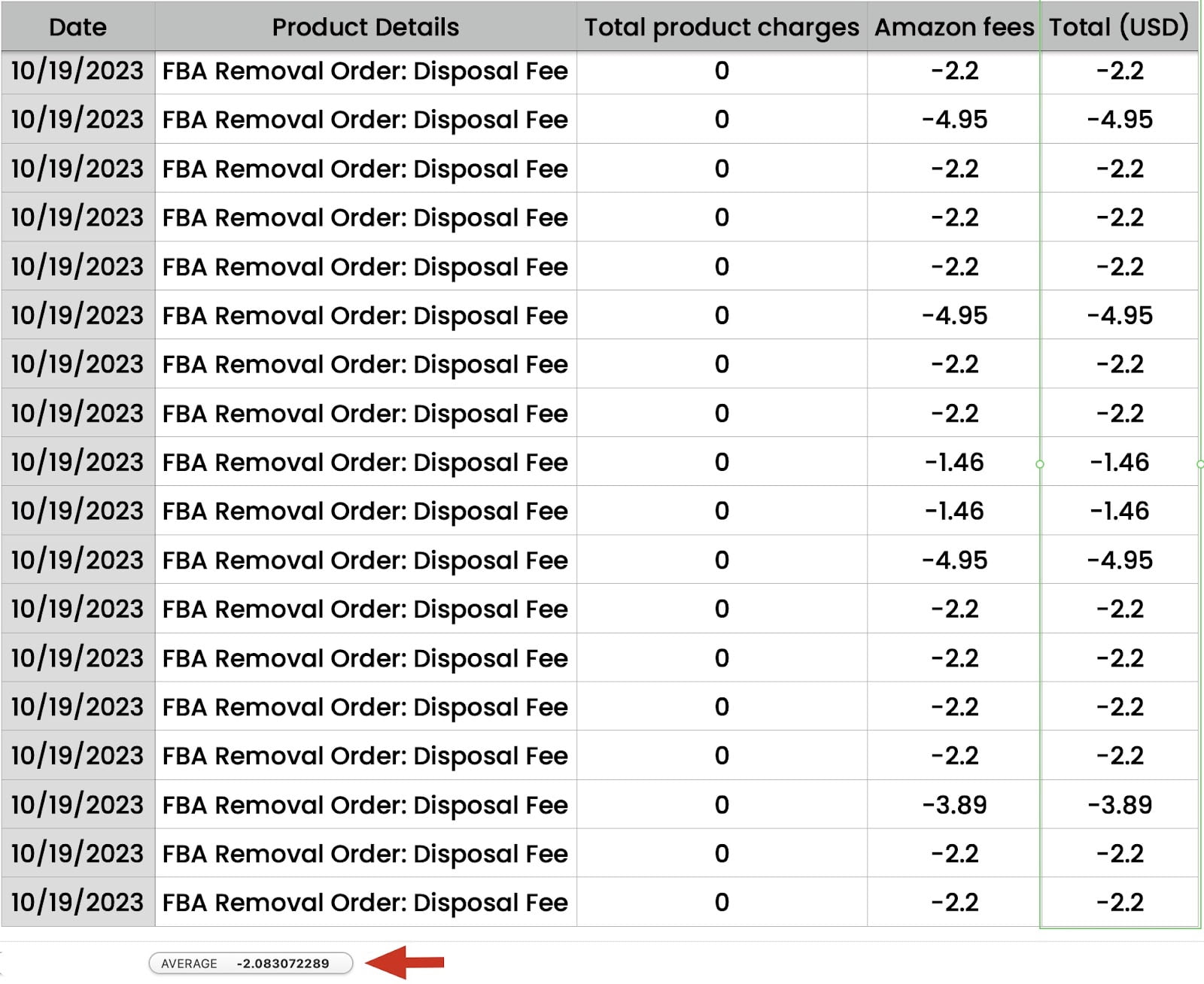
Average Removal Order Fee for Disposal, $2.08
Navigating Liquidation Challenges
Amazon’s liquidation process is not without its challenges. The platform does not support bulk uploads for liquidations, and there’s no guarantee of order completion. However, substantial savings are still attainable. With a virtual assistant managing these individual orders, the process becomes more manageable and efficient.
Success Metrics and Leveraging Bookz Pro
In the past 365 days, we’ve initiated over 8400 liquidation orders, with a success rate of over 7200 completions. This strategy has led to nearly $15,000 in savings compared to if we had opted for standard disposal. The investment of around 50 hours by my virtual assistant in managing these orders underscores the value and effectiveness of this approach.
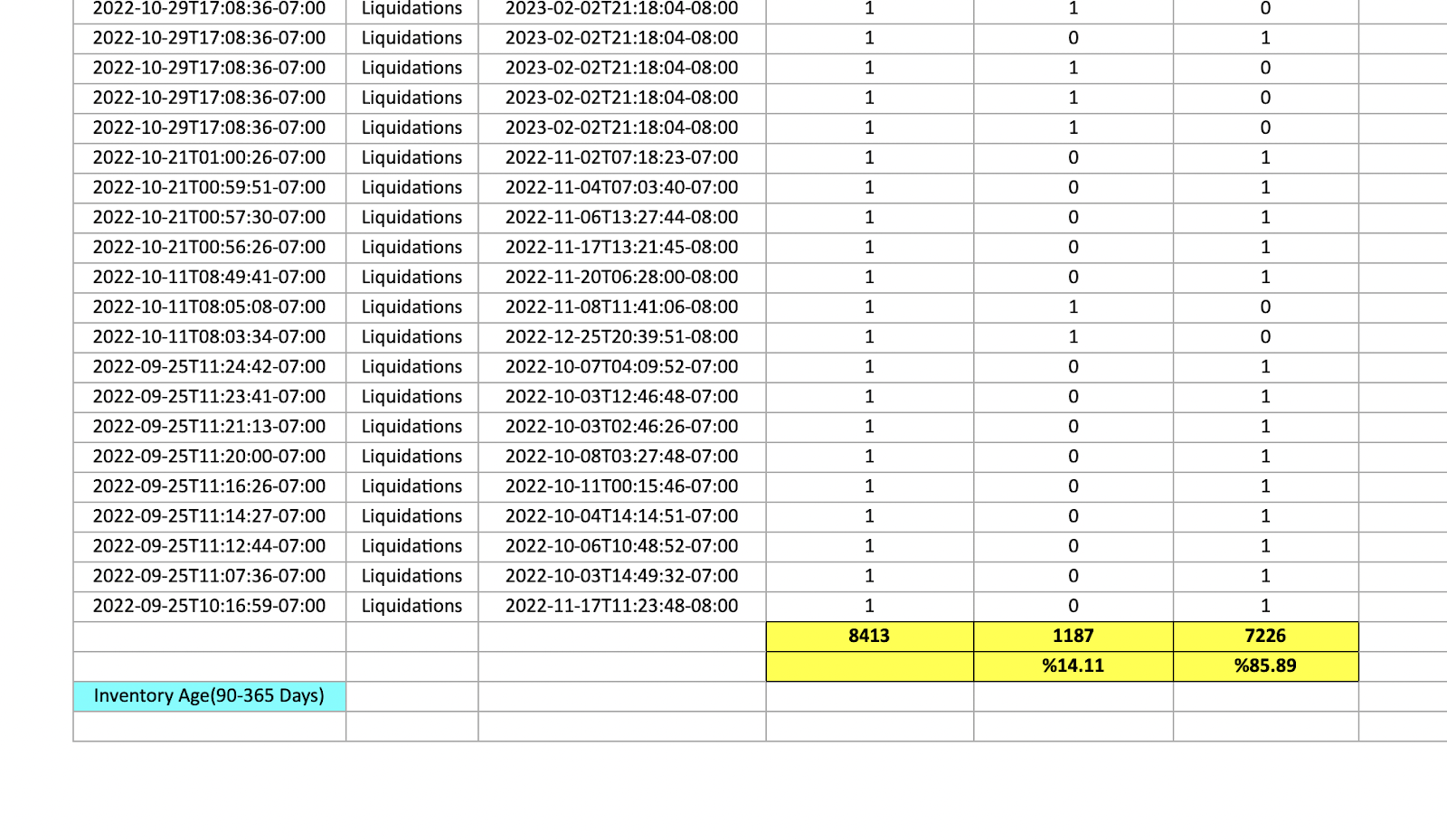
85%(over 7000 units) of Liquidation Orders are Successfully Completed
Moreover, Bookz Pro’s sophisticated inventory management tools have been crucial in my success. These tools enable me to filter and analyze my inventory, helping me decide which books to liquidate and which to dispose of, thus enhancing my decision-making process and literally saving me thousands of dollars and hours spent.
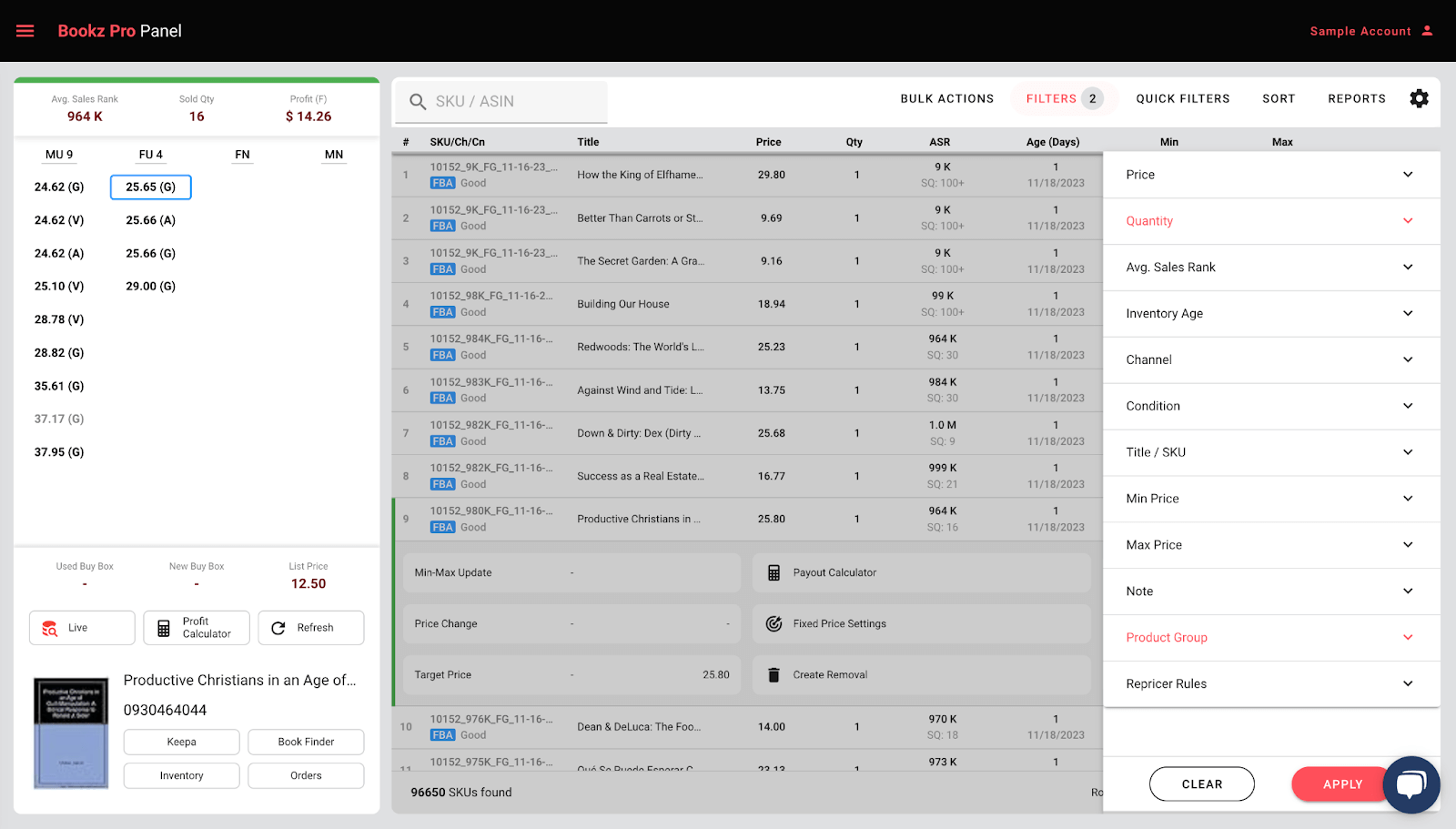
Advanced filters and bulk actions for efficient management on Bookz Pro
Conclusion: Maximizing Efficiency and Savings in FBA
Embracing strategic liquidation orders and effective inventory management through Bookz Pro has been a game-changer for my FBA book selling operations. This approach has not only streamlined my processes but also led to significant cost savings, proving its worth in the competitive world of reselling books on Amazon.



